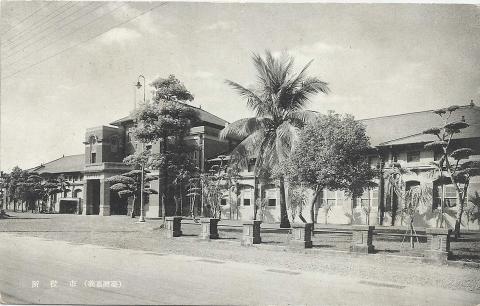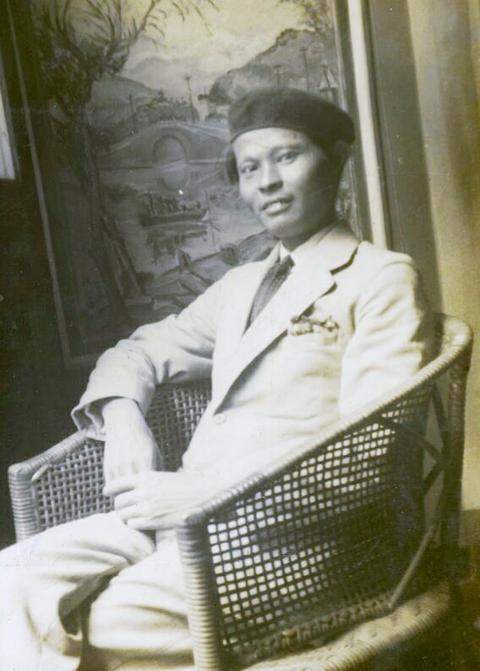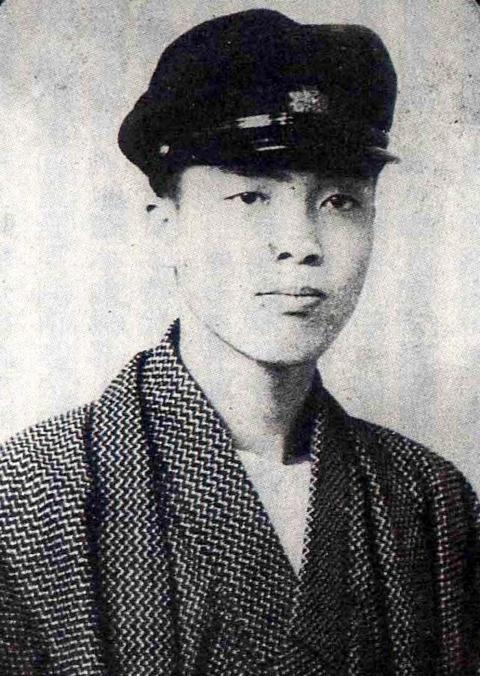March 2 to March 8
Pan Ying-san (潘英三) recalls seeing Chen Fu-chih’s (陳復志) body in front of the Chiayi Train Station. Chen had been dead for three days, but soldiers forbade his relatives from collecting his body, using the corpse as an example for those who dare oppose the Chinese Nationalist Party (KMT) government.
Five days later on March 23, 1947, the troops executed 11 more people at the same spot. When Pan asked what they did, the troops told him, “these people are hoodlums and bad guys.”

Photos courtesy of Wikimiedia Commons
Pan didn’t think that his father Pan Mu-chih (潘木枝) would be among the four men chosen for the next round of public executions two days later. When he rushed to the scene, his father had already been shot, dying in his arms.
These 16 victims made up just a fraction of those who lost their lives when the 228 Incident, an anti-government uprising that was brutally suppressed, spread to Chiayi. The civilian militia had the upper hand at first, but government reinforcements soon arrived and began killing or arresting anyone suspected of being involved.
While many of the dead were directly linked to the rebellion, countless more innocent souls lost their lives in the crossfire, became targets of random revenge or were taken away and never heard from again.

Photos courtesy of Wikimiedia Commons
AIRPORT SIEGE
According to Taiwan’s Post-Retrocession Civilian Uprisings: The 32 Incident (台灣光復初期民變: 嘉義三二事變) by historian Hsu Hsueh-chi (許雪姬), the unrest began in Chiayi in the afternoon of March 2, 1947, when dozens of young men arrived from Taichung and Changhua and called for locals to join the fight against the government.
“Are there no heroes in Chiayi?” a man in his 30s with a rifle on his back yelled. “If there is anyone who is truly brave, stand up and come with us to burn the mayor’s dorm!”

Photo courtesy of Wikimiedia Commons
Soon, large groups surrounded then-mayor Sun Chih-chun’s (孫志俊) abode as well as the police station in what Sun would write in his official report as the “Chiayi 32 Incident” (嘉義三二事變). They also reportedly beat up every recent arrival from China they encountered.
Hsu writes that the locals were easily incited after suffering from over a year of corruption in the government and blatant misconduct by KMT soldiers who had arrived from China. Inflation was off the roof, unemployment was on the rise and people were tired of being treated as second-class citizens under the rule of officials sent from China, including Sun.
Minor scuffles had already broken out on March 1, but Sun was somehow convinced that the unrest in the north wouldn’t spread to his city. He managed to get away as his dorm was ransacked; meanwhile a different group stormed the police station and made off with all the firearms. The violence continued into the evening as the group attacked the Monopoly Bureau’s local branch and other residences. By the end of the day, the civilians had control of the city’s transportation, communications and radio station.

Photo courtesy of Wikimiedia Commons
The next day, the citizens formed a committee to deal with the events with Chen as the leader. He was a Taiwanese who fought for the KMT in China against the Japanese, and was chosen because of his experience with both sides. Sun ordered the army into the city the next day, and the fighting renewed. With about 3,000 reinforcements from nearby regions, the civilians were able to besiege Sun and the troops at the Shuishang Airport (水上機場), cutting off the facility’s water and electricity.
Aboriginal Tsou fighters led by Yapasuyongu Yulunana joined the fray on March 7, but they returned to the mountains after the fighters chose to negotiate with the government. Yapasuyongu and several of his comrades were killed by the government in 1954 — but that’s another story.
The besieged troops refused to negotiate with the civilian militia, and with three shipments of artillery from Taipei and two reinforcement battalions arriving, were ready to fight back. The committee sent eight representatives to the airport as a last attempt at talks, but the army detained five of them and began the counterattack.
THE DECEASED
Chen was among the negotiators detained at the airport. On March 18, he was the first to be executed in front of Chiayi Train Station. According to the book In Front of Chiayi Station: 228 (嘉義驛前二二八), 11 civilians met the same fate on March 23, while four Chiayi city councilors were killed on March 25 — among them renowned painter Chen Cheng-po (陳澄波), who was also detained at the airport.
Pan Mu-chih was also one of the negotiators. He was a respected local doctor who allegedly saved Sun’s life by treating his lung disease. Pan was not interested in politics, but he was pushed into the role of negotiator due to his popularity.
And why were some of the others executed? Although neighborhood chief and shoe store owner Wu Hsi-shui (吳溪水) did not participate in the uprising, he was taken away when meeting with other local officials regarding the incident. Others were either marginally involved, held public office or completely innocent.
These 16 were the only ones publicly executed, while countless more lost their lives or disappeared in the weeks of chaos. The book Chulo Mountain Town: 228 (諸羅山城二二八) highlights 29 victims: Cheng Wan-shan (鄭萬山), for example, died fighting government troops, while Chen Tian-tao (陳甜桃) was struck by an artillery shell outside her home and Lin Kuang-chien (林光前) was arrested in the aftermath and never heard from again.
Tsai Chi-tsung (蔡啟聰) was escorting to safety the China-born manager of the sugar factory he worked at when he ran into government troops. In the confusion, the troops killed Tsai and four of his coworkers because they thought he was taking the manager hostage. His relatives never found his body.
The sorrow of those left behind permeate the books, their wounds still not recovered decades after the incident. Chiayi would become the site of Taiwan’s first 228 monument in 1989, the only one to be built in the 1980s.
Taiwan in Time, a column about Taiwan’s history that is published every Sunday, spotlights important or interesting events around the nation that have anniversaries this week.

Exceptions to the rule are sometimes revealing. For a brief few years, there was an emerging ideological split between the Democratic Progressive Party (DPP) and Chinese Nationalist Party (KMT) that appeared to be pushing the DPP in a direction that would be considered more liberal, and the KMT more conservative. In the previous column, “The KMT-DPP’s bureaucrat-led developmental state” (Dec. 11, page 12), we examined how Taiwan’s democratic system developed, and how both the two main parties largely accepted a similar consensus on how Taiwan should be run domestically and did not split along the left-right lines more familiar in

This month the government ordered a one-year block of Xiaohongshu (小紅書) or Rednote, a Chinese social media platform with more than 3 million users in Taiwan. The government pointed to widespread fraud activity on the platform, along with cybersecurity failures. Officials said that they had reached out to the company and asked it to change. However, they received no response. The pro-China parties, the Chinese Nationalist Party (KMT) and Taiwan People’s Party (TPP), immediately swung into action, denouncing the ban as an attack on free speech. This “free speech” claim was then echoed by the People’s Republic of China (PRC),

As I finally slid into the warm embrace of the hot, clifftop pool, it was a serene moment of reflection. The sound of the river reflected off the cave walls, the white of our camping lights reflected off the dark, shimmering surface of the water, and I reflected on how fortunate I was to be here. After all, the beautiful walk through narrow canyons that had brought us here had been inaccessible for five years — and will be again soon. The day had started at the Huisun Forest Area (惠蓀林場), at the end of Nantou County Route 80, north and east

Specialty sandwiches loaded with the contents of an entire charcuterie board, overflowing with sauces, creams and all manner of creative add-ons, is perhaps one of the biggest global food trends of this year. From London to New York, lines form down the block for mortadella, burrata, pistachio and more stuffed between slices of fresh sourdough, rye or focaccia. To try the trend in Taipei, Munchies Mafia is for sure the spot — could this be the best sandwich in town? Carlos from Spain and Sergio from Mexico opened this spot just seven months ago. The two met working in the